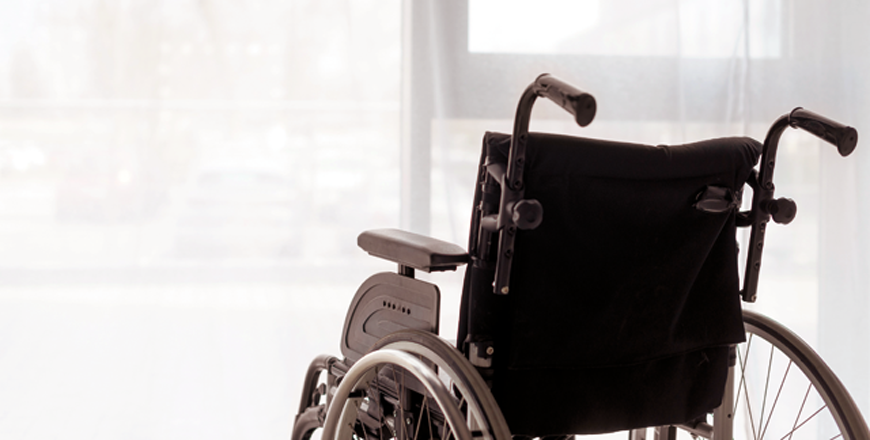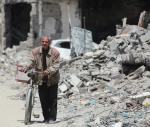You are here
Road to inclusion: highlighting challenges faced by disabled people
By Sara Faqir - Aug 14,2024 - Last updated at Aug 14,2024

People with disabilities in Jordan still encounter considerable obstacles on their journey towards full inclusion (JT File photo)
AMMAN — Persons with disabilities in Jordan still encounter considerable obstacles on their journey towards full inclusion. Despite ongoing efforts and progress, the road to comprehensive integration remains difficult.
With regard to the initiatives aimed at facilitating disability inclusion, Secretary General of the Higher Council for the Rights of Persons with Disabilities (HCD) Muhannad Azzeh told The Jordan Times that the council launched the 10-year inclusive action plan in cooperation with the Ministry of Education in 2020.
“The council, with financial support from the German Agency for International Cooperation, assisted the Ministry of Education in implementing the first phase of this plan, targeting 30 schools across the country to make them accessible,” Azzeh said.
The HCD also advocated for a sustainable institutional budget dedicated to disability rights within executive entities, he pointed out.
In response to this request, the government mandated that at least 1 per cent of ministries' total annual budgets be allocated to ensure their programmes and services are accessible to persons with disabilities.
Rashed Rababah, who is visually impaired from Irbid and works in Amman, shared with The Jordan Times the ongoing challenges he faces as a person with a disability, highlighting transportation as the most significant hurdle.
“Many streets, sidewalks, and public transportation stations lack tactile paving, and audible signals at crossings, making it difficult to navigate safely,” Rababah said.
The urban landscape in the Kingdom is often crowded and chaotic, with uneven sidewalks, unexpected obstacles, and vehicles parked on pedestrian pathways, he added.
The Bus Rapid Transit (BRT) system in Amman is the only accessible public transportation nationwide, but it remains difficult to use for people with disabilities due to the surrounding infrastructure, according to a 2022 report by Tamkeen for Legal Aid and Human Rights, an independent Jordanian non-governmental civil society organisation.
Pedestrian bridges and tunnels rely solely on stairs, making them inaccessible for wheelchair users or those with limited mobility, where most streets, sidewalks, and crossings also lack essential features like ramps, tactile paving, or auditory signals for people with visual or hearing impairments, the report added.
“In terms of accessibility, we have a team of engineers who conduct hundreds of field surveys at various premises, providing technical reports to enhance accessibility,” Azzeh highlighted.
“Our team has also played a key role in designing the BRT system in Amman and the route between Amman and Zarqa, to make sure it is accessible, " the HCD secretary general noted.
He added that the council launched an annual award for the most accessible buildings, pointing out that the HCD also seeks to make several tourist sites accessible, including Qalaa neighbourhood near the Amman Citadel, Petra, the Jordan Museum, and the Children's Museum.
The number of Jordanian people with disabilities (difficulty) aged five years and over stood at 651,396 according to the 2015 General Population and Housing Census of the Department of Statistics.
Of every nine people aged five years and over in Jordan, there is an individual with a disability (difficulty) at a percentage of 11.1 per cent, the census added.
Yousef Mahsiri, who is visually impaired, told The Jordan Times that educational centres for people with disabilities are scarce in the Kingdom.
He noted that the few available centres are not well-equipped and, when accessible, are often expensive, creating significant barriers for individuals with limited income.
"It was not until I finished high school that I discovered there were centres available for people like us," Mahsiri said.
He emphasised the importance of promoting these centres so that individuals with disabilities can know about these venues.
The HCD, in collaboration with the Ministry of Education, has introduced assistant teachers into the public education system for the first time to help students with disabilities, where the ministry will continue this initiative and other plans to increase the number of assistant teachers in the future, Azzeh highlighted. HCD, through a project funded by the Korea International Cooperation Agency (KOICA), has developed the first academic sign language dictionary in the region to address gaps in sign language vocabulary across subjects such as physics, chemistry, maths, and others.
“HCD is also working on developing unified screening and evaluation standards for students with disabilities to identify educational needs of students with disabilities, ensuring that they receive adequate education and are effectively included in public schools," Azzeh explained.
Related Articles
AMMAN — The Greater Amman Municipality (GAM) has recently begun installing tactile paving in the city in an effort to make the capital more
AMMAN — HH Prince Mired, the president of the Higher Council for the Rights of Persons with Disabilities (HCD), on Wednesday honoured Al Taj
AMMAN — His Majesty King Abdullah on Monday commended the determination of people with disabilities, reaffirming his pride in their initiati

















